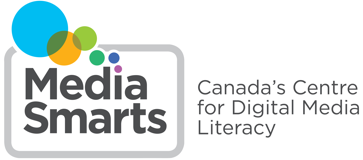Outcome Chart - Manitoba - English Language Arts 9
Listen, speak, read, write, view, and represent to explore thoughts, ideas, feelings, and experiences
Discover and Explore
- discuss with peers preferences for texts and genres by particular writers, artists, storytellers, and filmmakers
Lessons
- Cop Shows
- Crime in the News
- Hate 2.0
- Hate or Debate?
- Images of Learning: Secondary
- Scapegoating and Othering
- Television Broadcast Ratings
- The Girl in the Mirror
- The Price of Happiness: On Advertising, Image, and Self Esteem
- Thinking About Hate
- Thinking Like a Tobacco Company: Grades 7-9
- Truth or Money
- Who Knows? Your Privacy in the Information Age
listen, speak, read, write, view, and represent to comprehend and respond personally and critically to oral, print, and other media texts
Use Strategies and Cues
- use textual cues [such as common literary, expository, and media text structures] and prominent organizational patterns [such as chronology, cause and effect, comparison and contrast, problem and solution] within texts to construct and confirm meaning and interpret texts
Respond to Texts
- experience texts from a variety of forms and genres [such as essays, broadcast advertisements, romantic literature] and cultural traditions; explain various interpretations of the same text
- examine how personal experiences, community traditions, and Canadian perspectives are presented in oral, literary, and media texts
- discuss how word choice and supporting details in oral, literary, and media texts [including drama and oral presentations] affect purpose and audience
Understand Forms and Techniques
- explain preferences for particular forms and genres of oral, literary and media texts
- examine the use of a variety of techniques [including establishing setting, characterization, and stereotyping] to portray gender, cultures, and socio-economic groups in oral, literary and media texts
- appreciate variations in language, accent, and dialect in Canadian communities and regions; recognize the derivation and use of words, phrases, and jargon
- examine creative uses of language in popular culture [including advertisements, magazines, and music]; recognize how figurative language and techniques create a dominant impression, mood, tone and style
Create Original Text [such as video scripts, debates, editorials, audio tapes with voice and music, speeches, readers theatre, formal essays, letters, advertisements] to
- communicate and demonstrate understanding of forms and meanings
Lessons
- Advertising Alcohol on the Web
- Cop Shows
- Don’t Drink and Drive: Assessing the Effectiveness of Anti-Drinking Campaigns
- Gender Messages in Alcohol
- Hate 2.0
- Hate or Debate?
- Images of Learning: Secondary
- Kellogg Special K Ads
- My Voice is Louder Than Hate: The Impact of Hate
- My Voice is Louder Than Hate: Pushing Back Against Hate
- Perceptions of Youth and Crime
- Political Cartoons
- Popular Music and Music Videos
- Scapegoating and Othering
- The Girl in the Mirror
- Thinking About Hate
- Tobacco Labels
Educational Game
listen, speak, read, write, view, and represent to manage ideas and information
Plan and Process
- develop focused questions to establish a purpose for reading, listening and viewing information sources
- prepare and use a plan to access, gather, and evaluate information and ideas from a variety of human, print, and electronic sources
Select and Process
- obtain information and varied perspectives when inquiring or researching using a range information sources [such as expository essays, radio and television transcripts, charts, tables, graphs, diagrams]
- evaluate information sources for possible bias using criteria designed for a particular inquiry or research plan
- expand and use a variety to skills [including visual and auditory] to access information and ideas from a variety of sources [including on-line catalogues, periodical indices, broadcast guides, film libraries, and electronic databases]
- identify a variety of factors [such as organizational patterns of text, page layouts, font styles, colour, voice-over, camera angle] that affect meaning; scan to locate specific information quickly; summarize, report, and record main ideas of extended oral, visual, and written text
Lessons
Student Handouts/Activities
Educational Game
listen, speak, read, write, view and represent to enhance the clarity and artistry of communication
Generate and Focus
- Use a variety of techniques to generate and select ideas for oral, written, visual aids
- Adapt specific forms [such as book and film reviews, editorials, multimedia presentations, newscasts, letters, essays, poetry, myths, prose] to match content, audience, and purpose
- Identify and use a variety of organizational patterns [such as flashbacks, cause and effect, comparison and contrast, problem and solution] in own oral, written and visual texts; use effective transitions
Lessons
- Advertising Alcohol on the Web
- Crime in the News
- Deconstructing Web Pages
- Don’t Drink and Drive: Assessing the Effectiveness of Anti-Drinking Campaigns
- Gender Messages in Alcohol
- Hate 2.0
- Designer & Brand Names
- Marketing to Teens: Gotta Have It!
- Marketing to Teens: Marketing Tactics
- Marketing to Teens: Talking Back
- Popular Music and Music Videos
- Selling Tobacco
- Thinking About Hate
- Tobacco Labels
- Video Games
- Video Production of a Newscast
- Writing a Newspaper Article
listen, speak, read, write, view and represent to celebrate and build community
Develop and Celebrate Community
- Explain ways in which oral, literary, and media texts reflect topics and themes in life
- Reflect on ways in which the choices and motives of individuals encountered in oral, literary, and media texts provide insight into those of self and others; discuss personal participation and responsibilities in a variety of communities
Teaching Units
- Bias in the News
- Crime in the News
- Exposing Gender Stereotypes
- Hate 2.0
- Hate or Debate?
- Images of Learning: Secondary
- Kellogg Special K Ads
- Learning Gender Stereotypes
- Perceptions of Youth and Crime
- Scapegoating and Othering
- The Impact of Gender Role Stereotypes
- The Price of Happiness: On Advertising, Image, and Self Esteem
- Thinking About Hate
- Violence and Video Games
